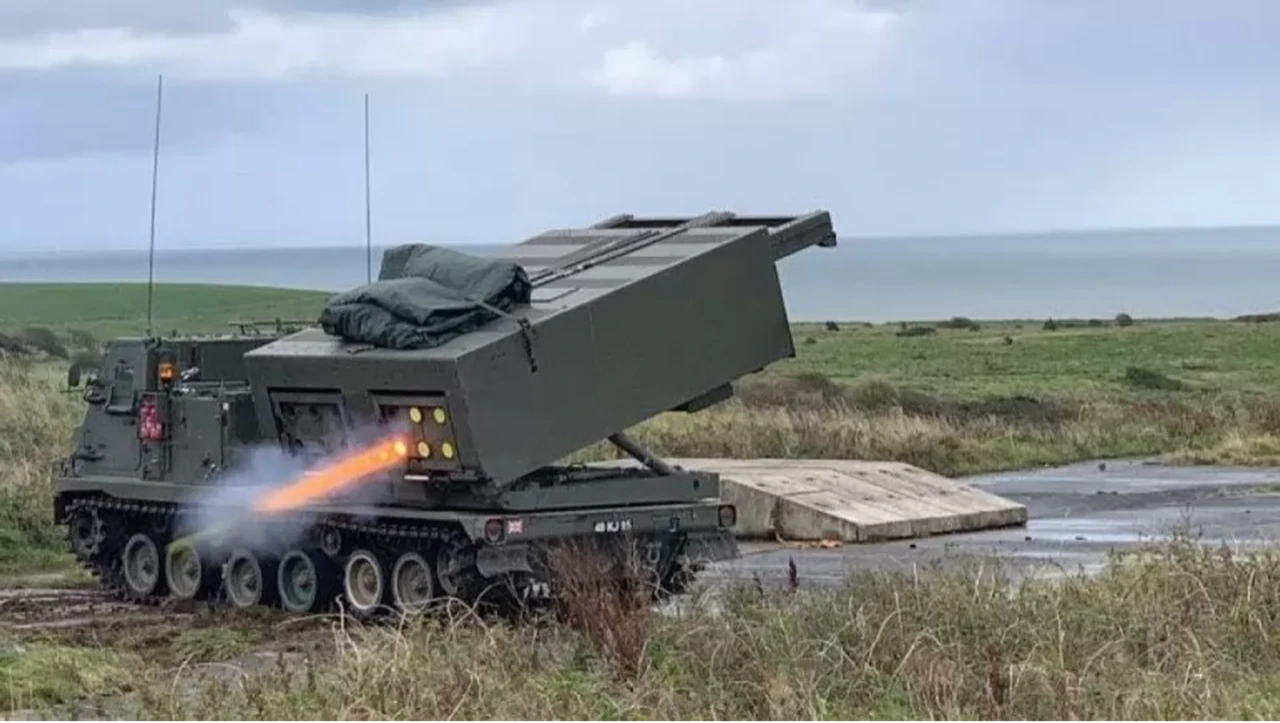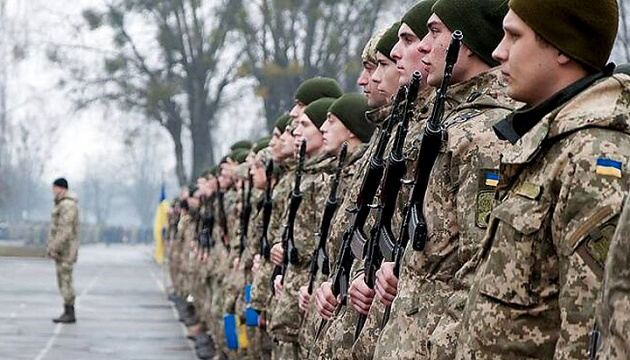By most measures, the war’s single most powerful weapon is the U.S.-designed M270 rocket artillery system.
¬ÝIn a series of exclusive interviews with¬ÝKyiv Post¬Ýduring January combat operations in the Bakhmut sector, soldiers and officers from one of Ukraine‚Äôs most secretive artillery units, the 107th¬ÝRocket Artillery Brigade, describe their experience learning to operate the M270, and using its precision-guided rockets to strike Russian army troop concentrations, headquarters and ammo dumps.
¬Ý‚ÄúWe understand this is a big responsibility, and that we have an important role to play in the war,‚Äù commander Lieutenant Colonel Dmitry Suprunyuk* says. ‚ÄúEvery mission we carry out can have a decisive effect, and for many reasons we have no right to make a mistake.‚Äù
¬ÝAs the interview takes place, Suprunyuk and other Armed Forces of Ukraine (AFU) service personnel are in a clandestine position in a forest in the Bakhmut sector. Most soldiers remain out of sight in underground hides covered with pine needles. Meanwhile, supply vehicles come and go quickly, mobile phones are turned off, and the Starlink system is in default standby mode. Men in the communications bunker exchange messages about refueling and rearming following the morning‚Äôs mission ‚Äì a strike against a building near Soledar, possibly containing a lot of Russian infantry.
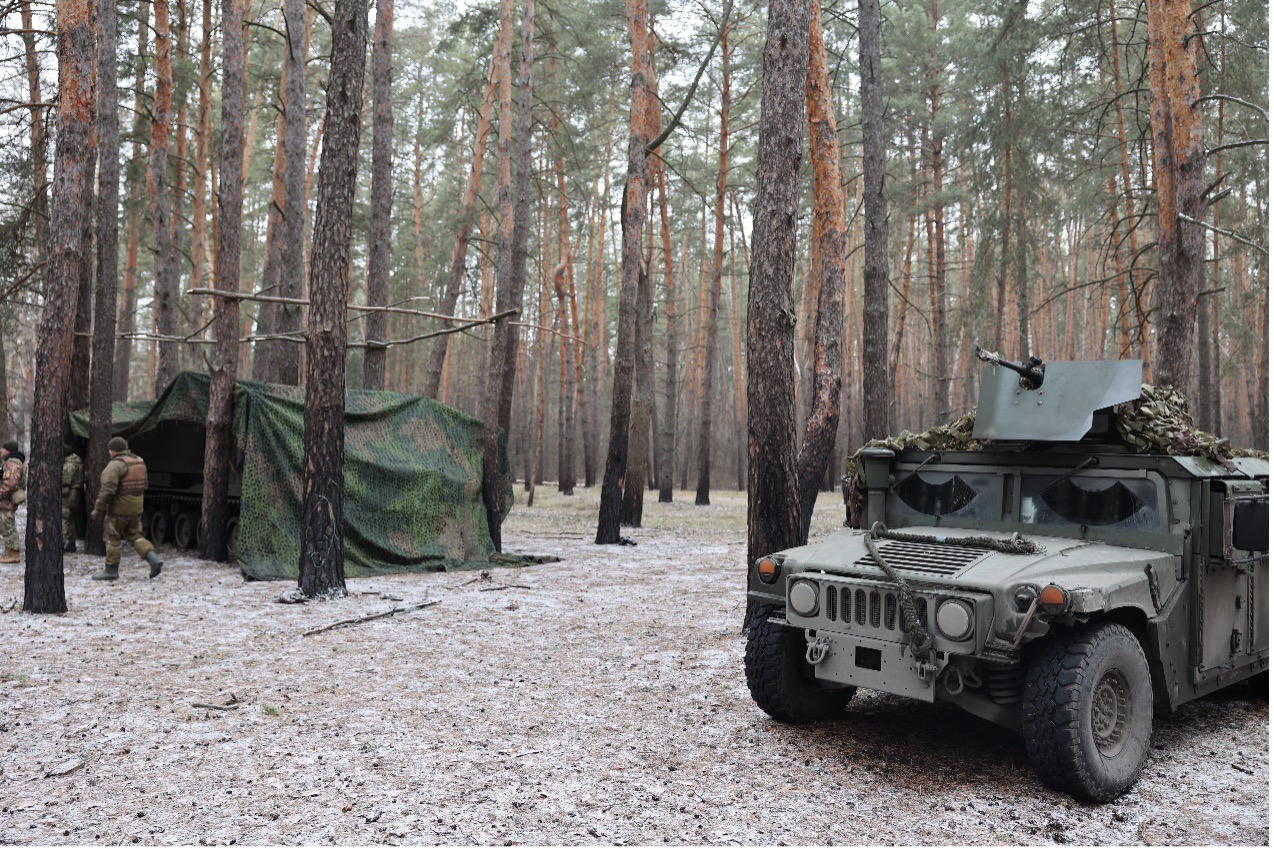
Soldiers from Ukraine’s 107th Rocket Artillery Brigade walk past a well-camouflaged M270 system
a forest location in the Donbas region. Photo credit: Phil Ittner.
Officers at the 107th¬Ýtell¬ÝKyiv Post¬Ýhow the morning strike ‚Äúwent well‚Äù but details are classified. Crew members in line to be sent out on the next M270 launch mission are anything but jubilant ‚Äì just maintaining equipment and waiting for their turn.
¬Ý‚ÄúActually, our work is very routine and systematic. We get some target coordinates, we drive out to a designated launch site, we fire our rockets and pack up fast, and then then we come back or go somewhere else,‚Äù operator Valery Tomashenko* says.
MORE ON THIS TOPIC
Ukrainian Cabinet’s New Conscription Rules: War-critical Workers May Avoid Draft
But – Getting sacked from a job exempting a person from conscription automatically makes the former worker a potential draftee.
¬ÝThe exact number of M270s operated by Ukraine is a military secret. According to open sources, the count is probably 13 in total across the entire AFU, with systems donated by Britain, France and Germany.
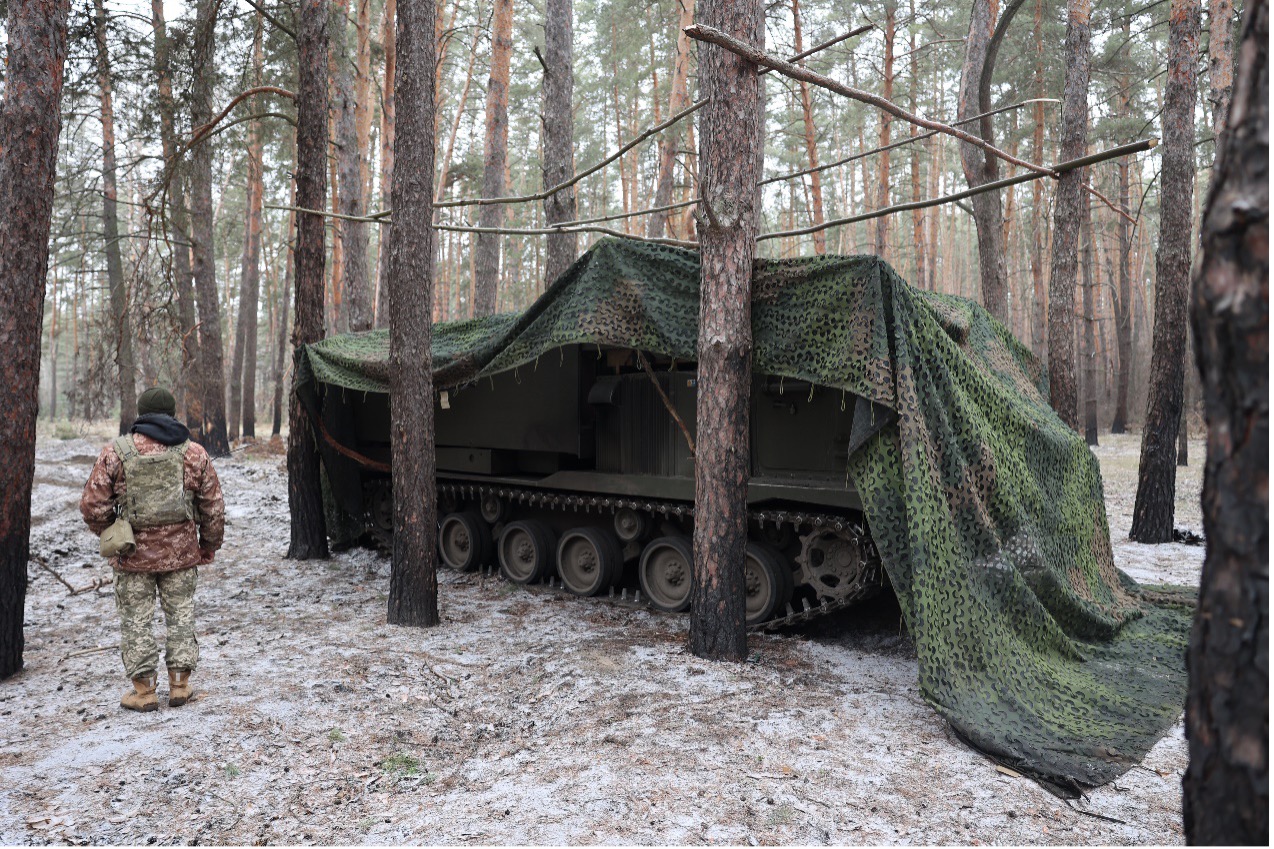
Soldier from Ukraine‚Äôs 107th¬ÝRocket Artillery Brigade looks at a well-camoflaged M270 rocket artilery system in a forest in the Donbas region. Jan.16 photograph by Phil Ittner.
¬ÝAn M270 operator rarely sleeps in the same place for any length of time, Tomashenko says, because army commanders keep valuable weapons constantly on the move and hopefully out of sight of Russian reconnaissance.
¬Ý‚ÄúWe are based at several locations and we sometimes go to work during the day and sometimes during the night, but the work itself is pretty much the same all the time.‚Äù he says.
¬ÝA website designer mobilized at the outset of the war, Tomashenko was one of several dozen members of the 107th picked in May to travel to Britain to learn how to operate the M270. The equipment is essentially a squat, tracked armored vehicle that carries exactly twice the number of deadly, long-range rockets as the more famous HIMARS.
¬ÝEvolution of the M270
¬ÝThe M270 is a Cold War weapon to which modern technology has given a new lease of life. Originally, the idea of the M270 was to fire a salvo of unguided rockets carrying anti-armor submunitions in the general direction of a massed Soviet or North Korean tank column. Warheads would scatter hundreds of parachute-dropped explosives, resulting in any vehicle (or pretty much anything else) in one square kilometer beneath the rain of mini-bombs would be blasted.
¬ÝFast forward to the 2000s and into the U.S. quagmire in Afghanistan, and Pentagon planners understood that the U.S. Army‚Äôs opponent of the time ‚Äì Taliban insurgents ‚Äì had no tanks, and that blasting entire map grid squares did little to win Afghan hearts and minds.
¬ÝThe U.S. arms conglomerate Lockheed-Martin, funded by the generosity of the U.S. taxpayer came up with a solution: The Guided Multiple Launch Rocket System (GMLRS), a 227mm rocket using GPS guidance. The idea, at the time, was to prevent collateral damage.
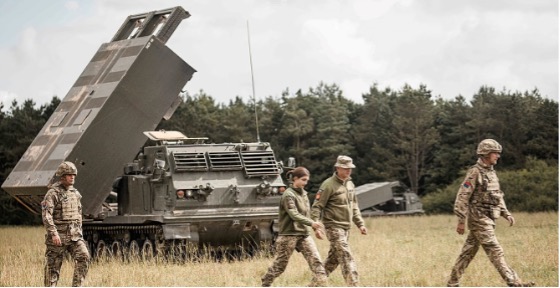
Ukrainian soldiers train with the U.S.-made M270 in spring 2022. Source: Ukraine Ministry of Defense.
¬ÝFast forward another decade to today. In Ukrainian hands, the GMLRS gives Suprunyuk and his men the ability to pick an individual building or logistics base 80 kilometers away, and have a reasonable chance of flying a rocket carrying 91 kilograms of high explosives through a selected window. In July and August last year, the AFU used dozens of GMLRS missiles to pound and eventually demolish a five meter-wide section of the Antonivskyi Bridge over the Dnipro River, cutting a critical logistics bottleneck for Russian troops in the then-occupied city of Kherson. The Russians abandoned Kherson in early November.
¬ÝU.S. and European media report that a single M270 missile, once shipped all the way from Lockheed‚Äôs factory to a forest in eastern Ukraine, costs between $4-500,000. Suprunyuk says that when he and his commanders review drone reconnaissance intelligence, a big question he must answer is not only whether it‚Äôs safe to send men and machines out to a firing position, but whether their target is worth a half million dollars. The proximity of civilian homes is another factor, he said.
¬Ý¬ÝSoldiers and officers tell¬ÝKyiv Post¬Ýthat by the time the AFU high command picked them to trade in Soviet-era Smerches for U.S.-made M270s, the 107th was thoroughly practiced at launching long range rocket strikes, and that adaptation to the NATO weapons system was fairly easy.
Tomashenko explains how skilled British instructors and the system’s logical control lay-out has made crossover training simple. Suprunyuk praises the weapon’s designers.
¬Ý‚ÄúReally, the difference between the M270 and Smerch is night and day,‚Äù Suprunyuk points out. ‚ÄúIt‚Äôs like comparing a Zhiguli (a small Soviet-era car well-known for its poor mechanical quality and an uncomfortable ride)¬Ýto a Lamborghini.‚Äù
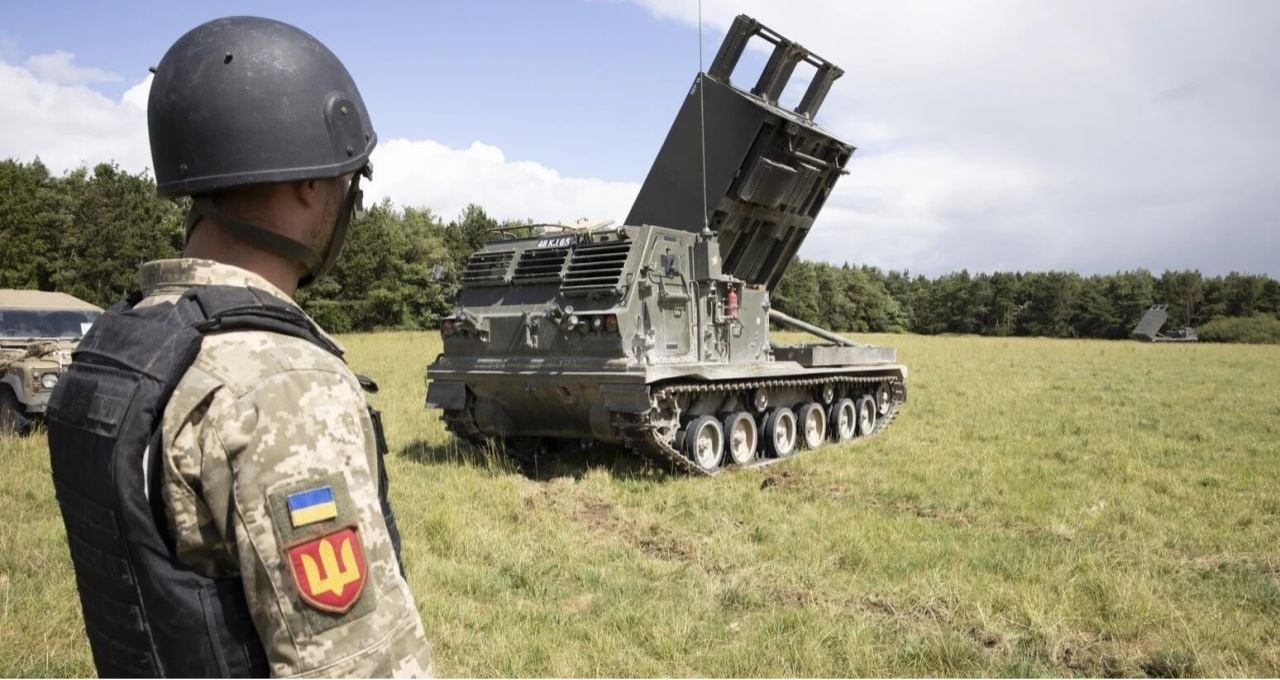
Ukrainian looks on during training in Bertain on the M270 rocket artillery system, in June.
Screen grab from Sky News Television, published by Ukraine’s Ministry of Defense
¬ÝAccording to Ukrainian and Russian information platforms, on Jan. 16, the day¬ÝKyiv Post¬Ývisited the 107th, a precision guided, long-range AFU missile strike levelled a building in the western outskirts of the town of Soledar, near Bakhmut.
¬ÝRussian casualties reportedly exceeded 20 personnel, including men inside the building from the mercenary group Wagner. It was not possible to determine conclusively whether an M270 from the 107th¬Ýwas responsible for the strike.
¬Ý*Interviewees¬Ýasked¬ÝKyiv Post¬Ýto¬Ýuse pseudonyms to protect their identities. During meetings with¬Ýthe¬Ý107th¬ÝBrigade,¬ÝKyiv Post reporters were accompanied by an AFU media escort. The officer asked Kyiv Post not to publish the unit location, number of M270s observed,¬Ýand number of soldiers in the unit.
Source:kyivpost.com/
